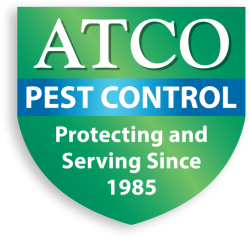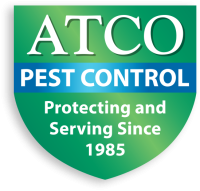How Often Should You Get Your Home Inspected for Termites?
If you’ve ever lived in the Bay Area long enough, you know how sneaky termites can be. One day your baseboards look fine, and the next — you’re poking at a soft spot that practically crumbles in your hand. Yeah, not a fun discovery. I get asked this all the time: “How often should I get my home inspected for termites?”
Short answer? At least every 2 years.
But the long answer — the one that actually protects your home — depends on a few things: where you live, how your home’s built, and how much you value sleeping easy at night knowing those silent destroyers aren’t chewing away beneath the surface.
Let’s dig in.
🏠 Why Regular Termite Inspections Matter
Termites aren’t like ants or spiders you can spot and squash. They work quietly. By the time you notice signs of damage — hollow-sounding wood, stuck doors, or droppings that look like coffee grounds — it usually means the colony’s been at it for years.
In California, especially around the Bay Area, our mild winters and damp springs give subterranean termites exactly what they love: moisture, warmth, and plenty of wood to chew through. The East Bay and North Bay are especially vulnerable because many older homes still have crawl spaces, wood foundations, and lush landscaping that keeps soil damp year-round.
So yeah — termite control isn’t a one-and-done deal. It’s maintenance, like changing your HVAC filter or checking your roof after a storm.
🐜 The General Rule: Biennial Inspections
For most Bay Area homeowners, a professional termite inspection once every other year is the gold standard.
Here’s why that timing makes sense:
-
Termites are active year-round. They don’t hibernate. Even in “winter,” they’re still munching away underground or inside your walls.
-
Seasonal changes expose new risks. Rainy winters and warm springs can create moisture pockets that attract swarming termites.
-
Damage spreads fast. A single colony can consume a foot of 2×4 in just a few months — multiply that by thousands of termites, and you see how “waiting another year” adds up.
-
Annual inspections are affordable protection. Compared to the cost of fumigation or structural repairs, an inspection is a small investment with a big payoff.
At ATCO Pest Control, we often find that homeowners who get regular termite inspections rarely need major treatments — because we catch problems early and treat them strategically with Integrated Pest Management (IPM) techniques.
🧱 When You Might Need More Frequent Inspections
Annual is the baseline, but some situations call for checking more often.
You might want to schedule inspections every year if:
-
Your home has a history of termite infestations
-
You live in a high-risk area like Union City, San Rafael, or the Oakland Hills, where soil moisture and wood structures mix
-
You notice persistent leaks, foundation cracks, or wood rot
-
Your property has dense landscaping or mulch beds close to the house
-
You’ve recently completed major construction or remodeling
Think of it this way — if your house has ever had termites, you’re on their radar. Colonies send out swarmers each year, and they remember where the buffet was good.
🪵 What Happens During a Termite Inspection?
A good termite inspection doesn’t just mean walking around your house with a flashlight.
Here’s what a professional from ATCO Pest Control actually does:
-
Exterior check – We look for mud tubes, wood-to-soil contact, damaged eaves, or signs of swarming.
-
Interior inspection – We tap and probe wood surfaces, inspect baseboards, attics, crawl spaces, and door frames.
- Attic & Crawlspace – The most important part! You see the outside and inside of your home every day, but nobody checks their attic or crawlspace daily. This is where we have more visibility to the wooden structure of your home that termites love so much.
-
Moisture assessment – Termites love damp areas, so we look for plumbing leaks, poor ventilation, or drainage issues.
-
Identification & report – If we find activity or risk factors, we’ll show you exactly what we saw — photos, entry points, and recommended treatment or prevention steps.
We use IPM-based methods that focus on long-term prevention, not just quick sprays. That means identifying conditions that attract termites in the first place and helping you fix those issues — from better drainage to sealing entry points.
🌦️ Bay Area Factors That Change Inspection Frequency
Every part of the Bay has its quirks when it comes to termite pressure:
-
San Francisco & Daly City: Older Victorian homes with wooden framing and damp foggy air — perfect for drywood termites.
-
East Bay (Berkeley, Richmond, Union City): Subterranean termites thrive in soil-heavy lots and irrigation-rich gardens.
-
North Bay (Petaluma, Novato): Warmer weather and more rural properties make for plenty of untreated wood and outdoor storage — another termite magnet.
So while “every other year” works as a rule of thumb, your local climate and home structure might call for a slightly different approach. That’s why our technicians always tailor inspection schedules based on your neighborhood, not just a calendar date.
🧰 Simple Things You Can Do Between Inspections
You don’t need to crawl under your house with a flashlight every month (please don’t). But keeping an eye out helps.
Here are a few easy checks you can do:
-
Keep wood and mulch at least a foot away from your foundation.
-
Fix leaky spigots or irrigation lines fast.
-
Make sure your gutters and downspouts drain water away from the house.
-
Don’t stack firewood or lumber against exterior walls.
-
Check for mud tubes or sawdust-like droppings in the garage or basement.
If you see something that looks suspicious — even if you’re not sure — give us a call. We’d rather check early than after the damage is done.
👉 Schedule your annual termite inspection with ATCO Pest Control.
💡 FAQs: Termite Inspection Questions Bay Area Homeowners Ask
1. What’s the best time of year to get a termite inspection?
Spring is prime time since swarms are most active then, but honestly, there’s no bad time. Termites don’t follow our calendar. If you haven’t had an inspection in the past year, schedule one now — don’t wait until spring.
2. How long does an inspection take?
Most homes take 45 minutes to an hour, depending on size and access points. You’ll get a full report on the same day.
3. What if termites are found during the inspection?
Don’t panic. ATCO uses eco-friendly, targeted methods to treat infestations — often without fumigation. We’ll explain your options clearly and help you choose what fits your home and budget best.
🔗 Helpful ATCO Resources
If you’re digging into termite prevention, these articles can help too:
-
Contact ATCO Pest Control for a customized inspection schedule.
👋 Final Thoughts
If you take one thing from this, make it this: Termite control in the Bay Area isn’t a one-time fix — it’s a habit. Getting your home inspected every 2 years (or more often if you’re in a high-risk spot) is the best way to protect your biggest investment.
At ATCO, we’ve been helping neighbors from Union City to Petaluma keep their homes termite-free using smarter, eco-conscious solutions that actually last.
So, when’s the last time you had your home inspected?
If it’s been a few years — or you can’t remember — it’s time to call your local termite control pros at ATCO Pest Control.
Because when it comes to termites, waiting never pays — but acting early always does.




